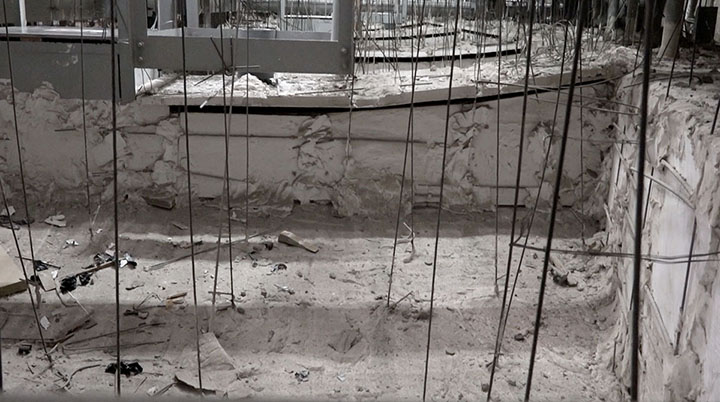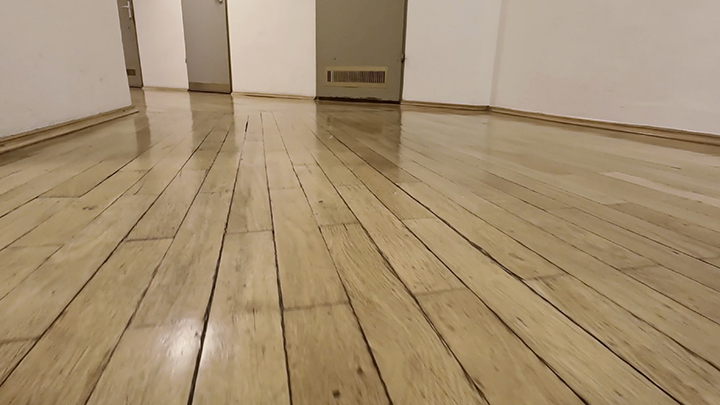Cella
HD film, color, stereo, 4:28 min, 2022

(en) Tracking shots through deserted rooms on different floors of the Gewandhaus are used to examine the ground and other surfaces. The basement and other non-public spaces play an important role in this. They stand for inwardness and what happens when bent. In addition to the surfaces of the building, the elements of infrastructure are also relevant to the film: electricity, water, gas, telecommunications and other lines connect not only the floors of the building, but also the building with the outside world. The architecture of cultural institutions has also been given another function in the present: the buildings are used as a shelter for the public.
The film Cella refers the ambiguity of Shostakovich's work to the architecture of the Gewandhaus Leipzig. Shostakovich has outwardly been loyal to the system in order to circumvent censorship, but through music he has indirectly expressed his true opinion of totalitarianism.
(de) Kamerafahrten durch menschenleere Räume in verschiedenen Etagen des Gewandhauses werden genutzt, um den Boden und andere Oberflächen zu untersuchen. Der Keller und andere nichtöffentliche Räume spielen dabei eine wichtige Rolle. Sie stehen für die Innerlichkeit und das, was im Verbogenen passiert. Neben den Oberflächen des Gebäudes sind auch die Elemente der Infrastruktur relevant für den Film: Strom, Wasser, Gas, Telekommunikation und andere Leitungen verbinden nicht nur die Etagen des Gebäudes, sondern auch das Gebäude mit der Außenwelt. Die Architektur von Kultureinrichtungen hat in der Gegenwart auch eine weitere Funktion bekommen: Die Gebäude werden als Schutzraum für die Öffentlichkeit genutzt.
Der Film Cella bezieht die Doppelbödigkeit des Werks von Schostakowitsch auf die Architektur des Gewandhauses. Schostakowitsch hat sich nach außen hin systemtreu gegeben, um die Zensur zu umgehen, aber durch die Musik hat er indirekt seine wahre Meinung zum Totalitarismus ausgedrückt.